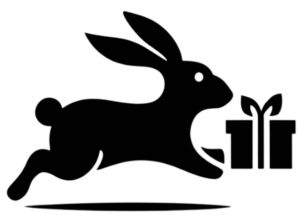Exploring Semantic Image Segmentation
 Semantic segmentation is a method in computer vision where an image is divided into segments, and each pixel is assigned a class label based on the object or region it belongs to. Unlike image classification that assigns a single label to the entire image, semantic segmentation provides a detailed understanding of the image at the pixel level, allowing for precise identification and analysis of objects and areas within the image. This technique is widely used in tasks like autonomous driving, medical imaging, and environmental monitoring, where accurate segmentation is crucial for making informed decisions and extracting meaningful insights from visual data.
Semantic segmentation is a method in computer vision where an image is divided into segments, and each pixel is assigned a class label based on the object or region it belongs to. Unlike image classification that assigns a single label to the entire image, semantic segmentation provides a detailed understanding of the image at the pixel level, allowing for precise identification and analysis of objects and areas within the image. This technique is widely used in tasks like autonomous driving, medical imaging, and environmental monitoring, where accurate segmentation is crucial for making informed decisions and extracting meaningful insights from visual data.
What is Semantic Image Segmentation?
Semantic image segmentation is a computer vision technique that involves the detailed process of partitioning an image into distinct segments and assigning a class label to each pixel within those segments. Unlike traditional image classification, where the objective is to assign a single label to an entire image, semantic segmentation seeks to provide a pixel-level understanding of the image. This means that every pixel in the image is classified according to the object or region it represents, allowing for a much more granular and comprehensive analysis.
The applications of semantic image segmentation are vast and diverse. In autonomous driving, for instance, this technique is crucial for the accurate identification of various elements on the road, such as vehicles, pedestrians, road signs, and lane markings. By understanding the exact location and boundaries of these objects, autonomous systems can make safer and more informed decisions. In the field of medical imaging, semantic segmentation helps in precisely identifying and delineating different anatomical structures or pathological regions, which is essential for diagnostics and treatment planning.

The effectiveness of semantic segmentation lies in its ability to provide detailed and precise visual understanding, which is indispensable for tasks requiring high accuracy. It employs advanced machine learning algorithms, particularly deep learning models such as Convolutional Neural Networks (CNNs), to learn and predict the class labels for each pixel. This pixel-level classification enables a thorough interpretation of complex scenes, making semantic segmentation a critical tool in various technological and industrial applications where precision and detail are paramount.

Why is semantic image segmentation important?
Semantic image segmentation is important because it enables a detailed understanding of visual data, which is crucial for many advanced applications. By assigning a class label to each pixel in an image, this technique allows for precise identification and differentiation of objects and regions within a scene. This pixel-level accuracy is essential for tasks where understanding the exact location and boundaries of objects is necessary. For instance, in autonomous driving, semantic segmentation helps in accurately detecting and classifying various elements on the road, such as vehicles, pedestrians, road signs, and lane markings. This precise identification is critical for the safety and reliability of self-driving cars, as it allows the system to make informed decisions based on the exact layout of the environment.
In the field of medical imaging, semantic image segmentation plays a vital role in enhancing diagnostic accuracy and treatment planning. By precisely delineating different anatomical structures or pathological regions in medical images, this technique assists healthcare professionals in identifying abnormalities and planning appropriate interventions. For example, in cancer treatment, accurately segmented images can help in identifying tumor boundaries, enabling targeted therapies and improving patient outcomes. The detailed and accurate visual information provided by semantic segmentation can significantly enhance the capabilities of medical imaging technologies, leading to better diagnosis and more effective treatments.
Beyond these applications, semantic image segmentation is also crucial for various other fields, such as agriculture, environmental monitoring, and augmented reality. In agriculture, it can help in monitoring crop health by identifying different types of plants and detecting diseases or pests. In environmental monitoring, semantic segmentation can be used to analyze satellite images for land use classification, deforestation tracking, and disaster assessment. In augmented reality, this technique enables the accurate overlay of virtual objects onto the real world by understanding the exact layout and composition of the physical environment. The broad applicability and precision of semantic image segmentation make it an indispensable tool in advancing technology and improving various aspects of our lives.
How does semantic image segmentation work?
Semantic segmentation works by utilizing advanced machine learning algorithms, particularly deep learning techniques, to analyze and classify each pixel in an image. The process typically involves the use of Convolutional Neural Networks (CNNs), which are designed to automatically and adaptively learn spatial hierarchies of features from input images. A common approach involves feeding the image into a pre-trained CNN that has been fine-tuned for the specific task of segmentation. This network processes the image through multiple layers, extracting features at various levels of abstraction. In the final layers, the network assigns a class label to each pixel, producing a segmented output where each pixel is categorized into a specific class such as road, vehicle, or pedestrian.
The training phase of semantic segmentation is critical and requires a large dataset of labeled images, where each pixel in the training images is annotated with the correct class label. The network learns to map the features extracted from the images to the corresponding class labels through a process of optimization, minimizing the difference between the predicted labels and the ground truth labels. Post-processing techniques, such as Conditional Random Fields (CRFs) or other refinement methods, can further enhance the segmentation accuracy by smoothing the predicted labels and ensuring consistency across the image. This combination of deep learning for feature extraction and advanced optimization techniques allows semantic segmentation models to achieve high levels of accuracy and robustness, making them effective for real-world applications.
Semantic image segmentation models
Trained models for semantic segmentation require a robust architecture to function properly. Below are some widely used semantic segmentation models that exemplify such architectures.
Fully Convolutional Networks (FCNs)
A fully convolutional network (FCN) is a state-of-the-art neural network architecture used for semantic segmentation, relying on several connected convolutional layers. Unlike traditional CNN architectures that consist of convolutional layers and flat layers outputting single labels, FCN models replace some of these flat layers with 1:1 convolutional blocks. This substitution enables further extraction of information from the image. By avoiding the use of flat, dense layers in favor of convolution, pooling, or upsampling layers, FCN networks become easier to train.
- Upsampling and Downsampling: As the network accumulates more convolutional layers, the image size is reduced, resulting in less spatial and pixel-level information—a necessary process known as downsampling. At the end of this process, data engineers perform image optimization by expanding, or upsampling, the feature map back to the shape of the input image.
- Max-Pooling: Max-pooling is another critical tool in the process of extracting and analyzing information from regions of an image. It selects the greatest element in a region being analyzed, resulting in a feature map containing the most prominent features from the previous feature map.
U-Nets
The U-Net architecture, introduced in 2015, is a modification of the original FCN architecture and consistently achieves better results. It consists of two parts: an encoder and a decoder. The encoder stacks convolutional layers that consistently downsample the image to extract information, while the decoder rebuilds the image features using the process of deconvolution. U-Net is primarily used in the medical field to identify cancerous and non-cancerous tumors in the lungs and brain.
- Skip-Connections: An important innovation introduced by U-Net is skip-connections, which connect the output of one convolutional layer to another non-adjacent layer. This process reduces data loss during downsampling, enabling higher-resolution output. Each convolutional layer is independently upsampled and combined with features from other layers until the final output accurately represents the analyzed image.
DeepLab
Developed by Google in 2015, the DeepLab semantic segmentation model further improves on the original FCN architecture to deliver even more precise results. While the stacks of layers in an FCN model significantly reduce image resolution, DeepLab’s architecture uses a process called atrous convolution to upsample the data. Atrous convolution allows convolution kernels to remove information from an image while leaving gaps between the kernel parameters.
- Dilated Convolution:
DeepLab’s approach to dilated convolution pulls data from a larger field of view while maintaining the same resolution. The feature space is then processed through a fully connected conditional random field algorithm (CRF), capturing more detail for a pixel-wise loss function, resulting in a clearer, more accurate segmentation mask.
Pyramid Scene Parsing Network (PSPNet)
Introduced in 2017, PSPNet deploys a pyramid parsing module that gathers contextual image data at a higher accuracy rate than its predecessors. Like its predecessors, PSPNet employs the encoder-decoder approach. However, where DeepLab applied upscaling for pixel-level calculations, PSPNet adds a new pyramid pooling layer to achieve its results. PSPNet’s multi-scale pooling allows it to analyze a wider window of image information than other models, enhancing its ability to produce accurate segmentations.
Conclusion
Semantic image segmentation is a powerful technique that revolutionizes how we understand and interact with visual data. By meticulously dividing images into meaningful segments and assigning class labels to each pixel, semantic segmentation offers a level of detail and precision that is unparalleled. This technique has far-reaching implications across various domains, from enhancing the safety of autonomous vehicles to aiding medical professionals in diagnosing and treating diseases.
In essence, semantic image segmentation is not just about labeling pixels; it’s about unlocking a deeper understanding of the world captured in images. Its importance stems from its ability to provide invaluable insights that drive innovation and improve countless aspects of our lives. As technology continues to evolve, semantic segmentation will remain at the forefront, empowering us to see and interpret the world with unprecedented clarity and accuracy.
References
Muñoz-Rodenas, J., García-Sevilla, F., Miguel-Eguía, V., Coello-Sobrino, J., & Martínez-Martínez, A. (2024). A Deep Learning Approach to Semantic Segmentation of Steel Microstructures. Applied Sciences, 14(6), 2297.
Yala, N., & Nacereddine, N. (2024, April). Deep Corrosion: Semantic Segmentation Unveiled Through Advanced Learning. In 2024 6th International Conference on Pattern Analysis and Intelligent Systems (PAIS) (pp. 1-6). IEEE.
Li, R., Li, S., Chen, X., Ma, T., Gall, J., & Liang, J. (2024). Tfnet: Exploiting temporal cues for fast and accurate lidar semantic segmentation. In Proceedings of the IEEE/CVF Conference on Computer Vision and Pattern Recognition (pp. 4547-4556).
Arafin, P., Billah, A. M., & Issa, A. (2024). Deep learning-based concrete defects classification and detection using semantic segmentation. Structural Health Monitoring, 23(1), 383-409.
Wang, J., Li, D., Long, Q., Zhao, Z., Gao, X., Chen, J., & Yang, K. (2024). Real-time semantic segmentation for underground mine tunnel. Engineering Applications of Artificial Intelligence, 133, 108269.
